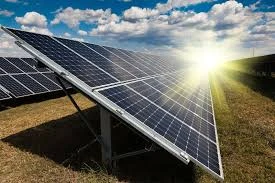solar inverter working principle
The Working Principle of Solar Inverters
Solar inverters play a crucial role in the conversion of solar energy into usable electricity, and understanding how they work is essential for maximizing the efficiency of solar energy systems. This article will explore the fundamental principles behind solar inverters, their types, and their significance in solar energy generation.
What is a Solar Inverter?
A solar inverter is an electronic device that converts the direct current (DC) electricity generated by solar panels into alternating current (AC) electricity, which is the standard form of electricity used in homes and businesses. Solar panels generate DC electricity when sunlight hits the photovoltaic cells, but most appliances and grid systems operate on AC electricity. Therefore, the inverter is a critical component in any solar energy system.
Key Functions of Solar Inverters
1. DC to AC Conversion The primary function of a solar inverter is to convert DC electricity into AC. This process involves using electronic circuits to transform the current, making it suitable for home appliances and the electric grid.
2. Maximum Power Point Tracking (MPPT) Solar inverters are equipped with MPPT technology, which optimizes the power output from the solar panels. It constantly monitors the voltage and current output of the solar panels and adjusts the electrical load to ensure that the maximum amount of power is being harvested, even under varying sunlight conditions.
3. Grid Synchronization For solar energy systems connected to the electricity grid, inverters ensure that the solar AC output is synchronized with grid voltage and frequency. This synchronization is critical for the safe and efficient operation of the grid and allows for excess energy to be fed back into the grid.
4. Monitoring and Communication Modern solar inverters often include monitoring capabilities to track the performance of the solar energy system. They can communicate data regarding energy production, system performance, and potential faults, allowing for timely maintenance and optimization.
solar inverter working principle

Types of Solar Inverters
There are several types of solar inverters available, each designed for specific applications and configurations
1. String Inverters This is the most common type of solar inverter. It connects a series of solar panels (the “string”) and converts their combined output into AC electricity. String inverters are cost-effective and suitable for residential systems with uniform sun exposure.
2. Microinverters Unlike string inverters, microinverters are installed on each individual solar panel, allowing for independent operation. This configuration maximizes energy production from each panel, especially beneficial in systems where panels may be partially shaded.
3. Power Optimizers These devices work in conjunction with string inverters. Each solar panel is equipped with a power optimizer that maximizes its output before sending the DC electricity to the string inverter for conversion. This technology provides some of the advantages of microinverters while still maintaining a centralized inverter system.
4. Hybrid Inverters Suitable for systems that combine solar power with energy storage (like batteries), hybrid inverters can manage energy from both solar panels and stored batteries. They provide the flexibility to use solar energy directly, draw from the grid, or utilize stored energy based on demand and availability.
The Importance of Solar Inverters
Solar inverters are pivotal in enhancing the efficiency of solar power systems. By ensuring maximum energy conversion and seamless integration with the grid, inverters not only contribute to the reliability of solar energy systems but also facilitate the transition to renewable energy sources. They play a vital role in reducing reliance on fossil fuels, lowering electricity costs, and promoting sustainable energy practices.
Moreover, as the technology advances, solar inverters are becoming smarter, integrating more sophisticated monitoring, control capabilities, and energy management solutions. This evolution is critical for the future growth of solar energy, making it an increasingly viable and efficient alternative to traditional energy sources.
In conclusion, the working principle of solar inverters is fundamental to the functionality of solar energy systems. Understanding their operation not only helps optimize solar energy production but also highlights their significance in a sustainable energy future. As more households and businesses adopt solar energy, the importance of reliable and efficient solar inverters will continue to grow.
-
Unlocking Energy Freedom with the Off Grid Solar InverterNewsJun.06,2025
-
Unlock More Solar Power with a High-Efficiency Bifacial Solar PanelNewsJun.06,2025
-
Power Your Future with High-Efficiency Monocrystalline Solar PanelsNewsJun.06,2025
-
Next-Gen Solar Power Starts with Micro Solar InvertersNewsJun.06,2025
-
Harnessing Peak Efficiency with the On Grid Solar InverterNewsJun.06,2025
-
Discover Unmatched Efficiency with the Latest String Solar InverterNewsJun.06,2025







